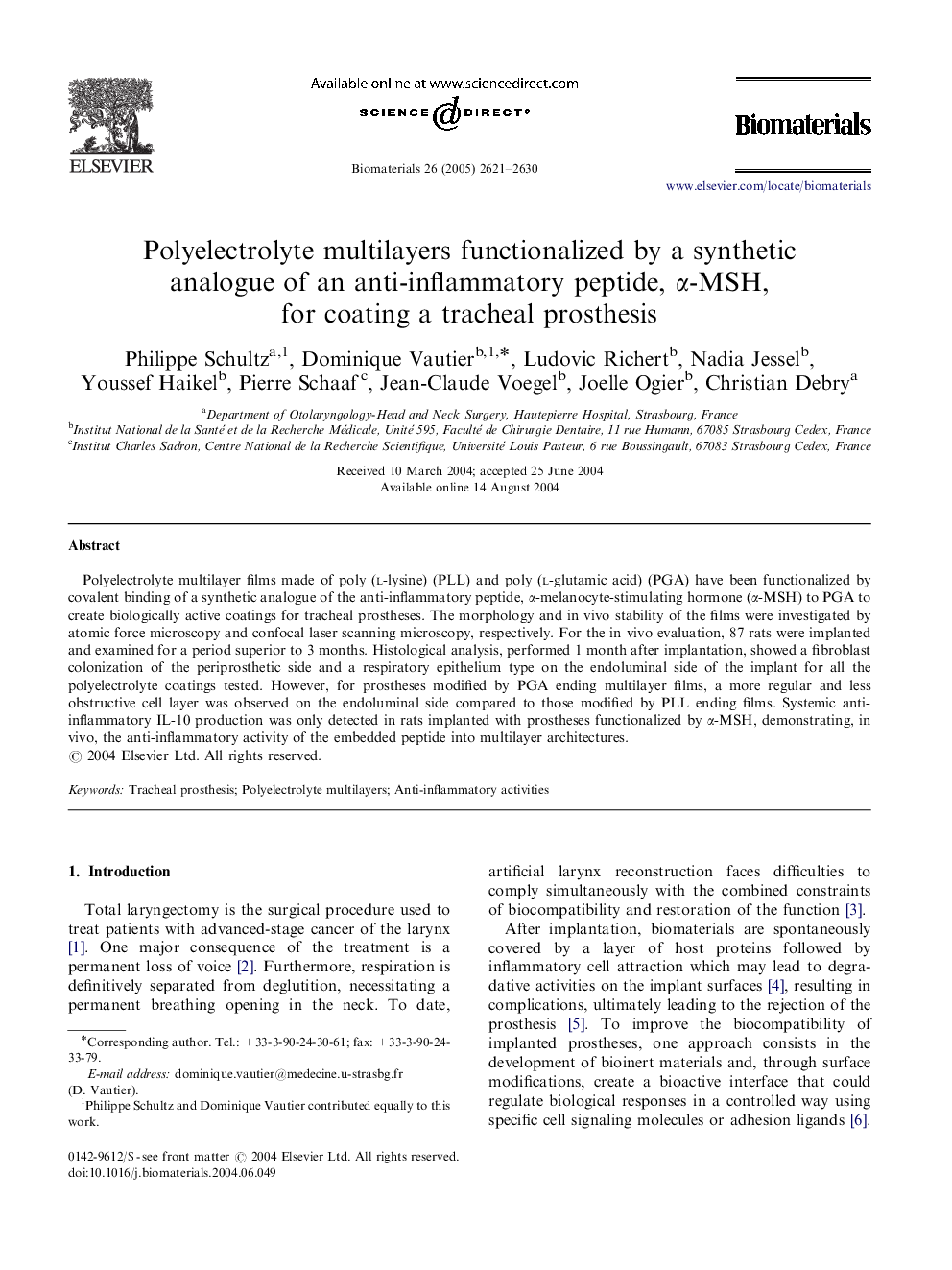| Article ID | Journal | Published Year | Pages | File Type |
|---|---|---|---|---|
| 12829 | Biomaterials | 2005 | 10 Pages |
Polyelectrolyte multilayer films made of poly (l-lysine) (PLL) and poly (l-glutamic acid) (PGA) have been functionalized by covalent binding of a synthetic analogue of the anti-inflammatory peptide, α-melanocyte-stimulating hormone (α-MSH) to PGA to create biologically active coatings for tracheal prostheses. The morphology and in vivo stability of the films were investigated by atomic force microscopy and confocal laser scanning microscopy, respectively. For the in vivo evaluation, 87 rats were implanted and examined for a period superior to 3 months. Histological analysis, performed 1 month after implantation, showed a fibroblast colonization of the periprosthetic side and a respiratory epithelium type on the endoluminal side of the implant for all the polyelectrolyte coatings tested. However, for prostheses modified by PGA ending multilayer films, a more regular and less obstructive cell layer was observed on the endoluminal side compared to those modified by PLL ending films. Systemic anti-inflammatory IL-10 production was only detected in rats implanted with prostheses functionalized by α-MSH, demonstrating, in vivo, the anti-inflammatory activity of the embedded peptide into multilayer architectures.
